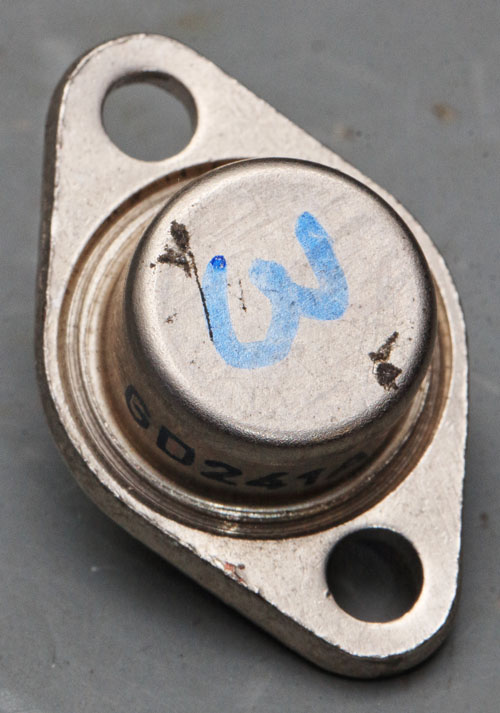
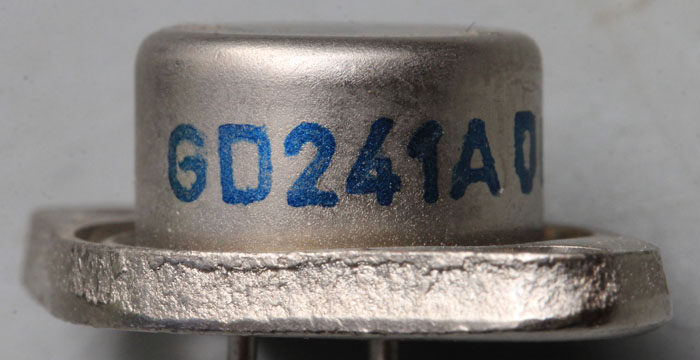
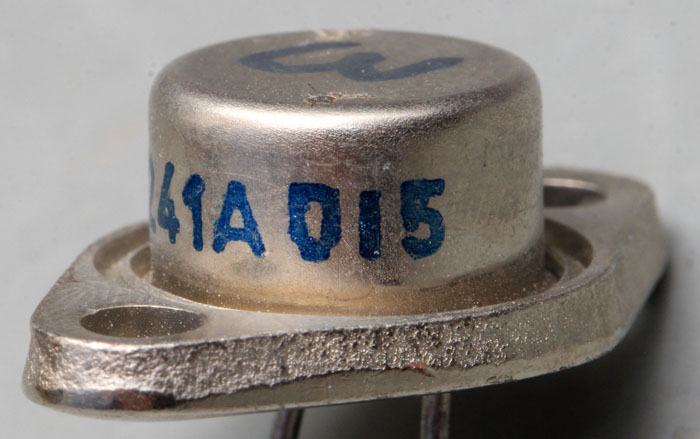
The GD241 is a germanium power transistor with a Vce of 35V (Rbe=50Ω). It can conduct up to 3A. The letter at the end of the designation, here an A, stands for the gain factor of the transistor (A: 18-35, B: 28-56, C: 45-90). The datasheet specifies the maximum junction temperature as 85°C. This is 10°C higher than the GD180 (
https://www.richis-lab.de/BipolarA06.htm), which is probably one reason why the maximum power dissipation of 10W is twice as high. ft is at least 450kHz. The sign following the letter A is the logo of the "Röhrenwerk Neuhaus".
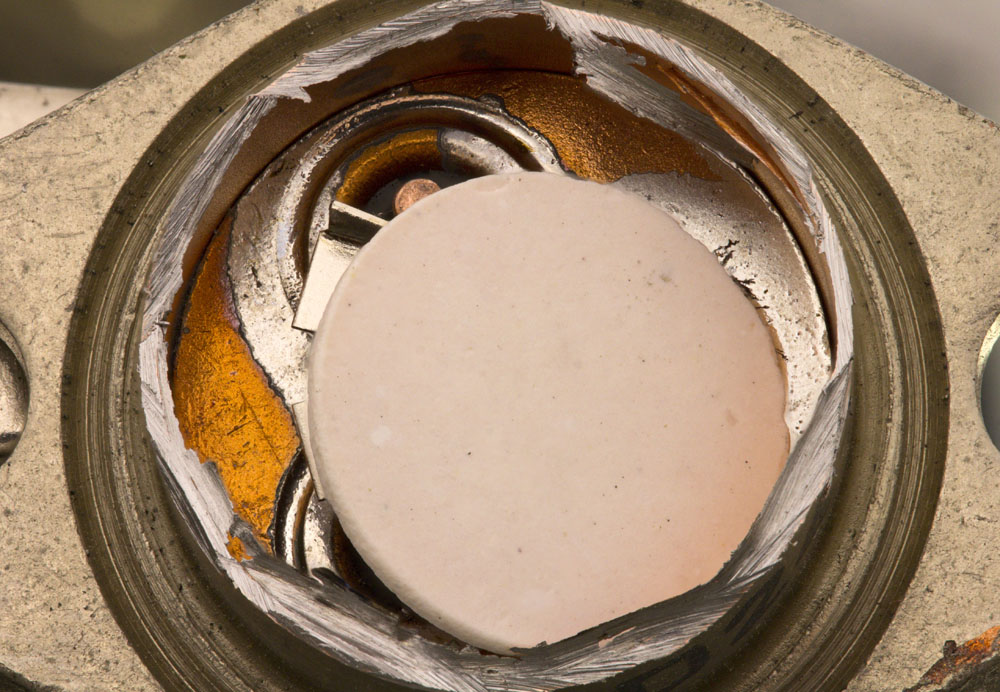
A large white plate was inserted into the housing to bind any moisture that may occur.
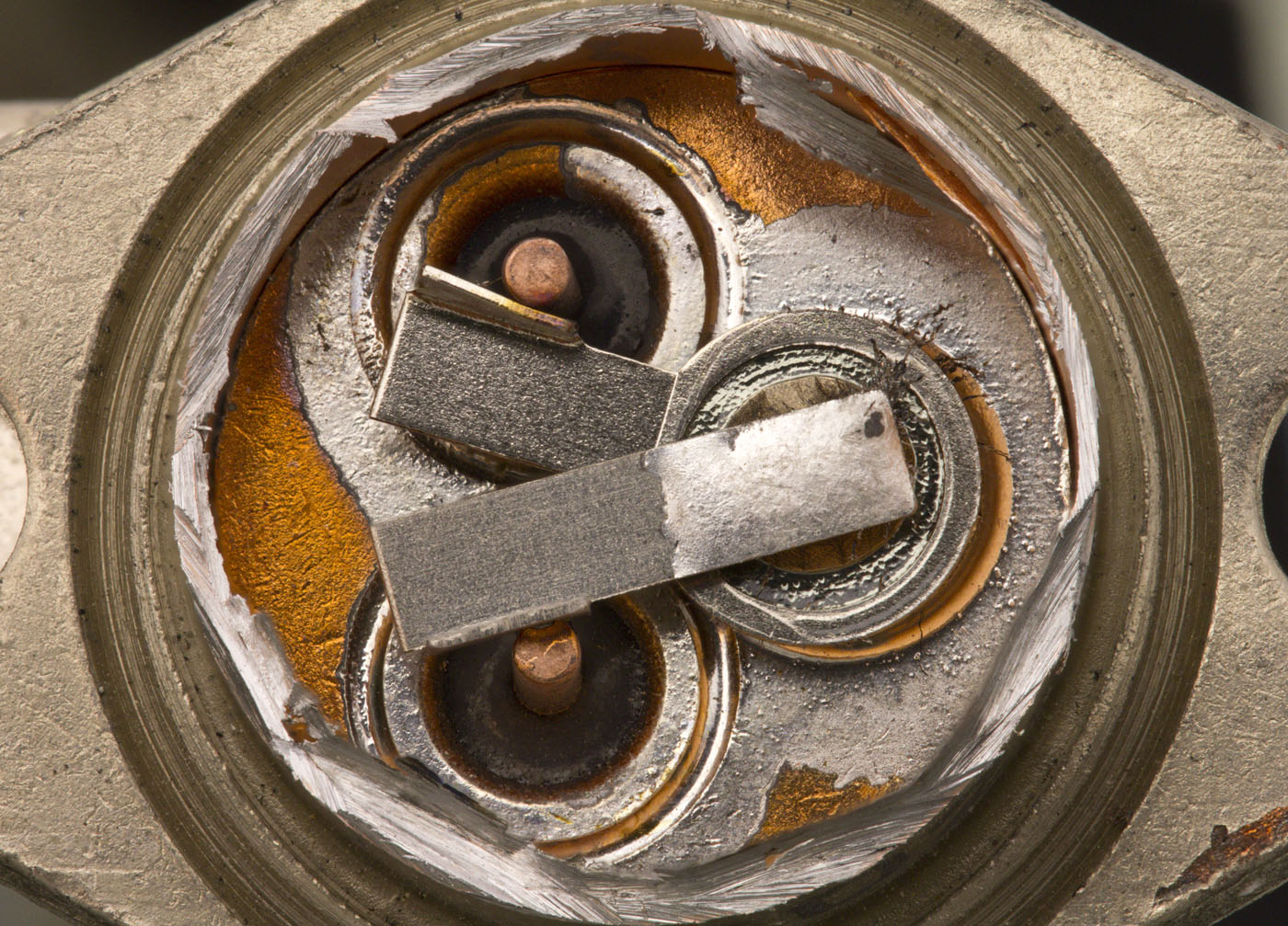
The construction of the transistor corresponds to the construction of the GD180. This is not surprising, since this GD180 was manufactured in the Röhrenwerk Neuhaus too.
In the overview you can already see that dendrites were formed in this transistor. Similar dendrites were found in the Tesla GD609 (
https://www.richis-lab.de/Bipolar65.htm). In the GD609, however, the inside of the case was heavily corroded, no traces of corrosion can be found here.
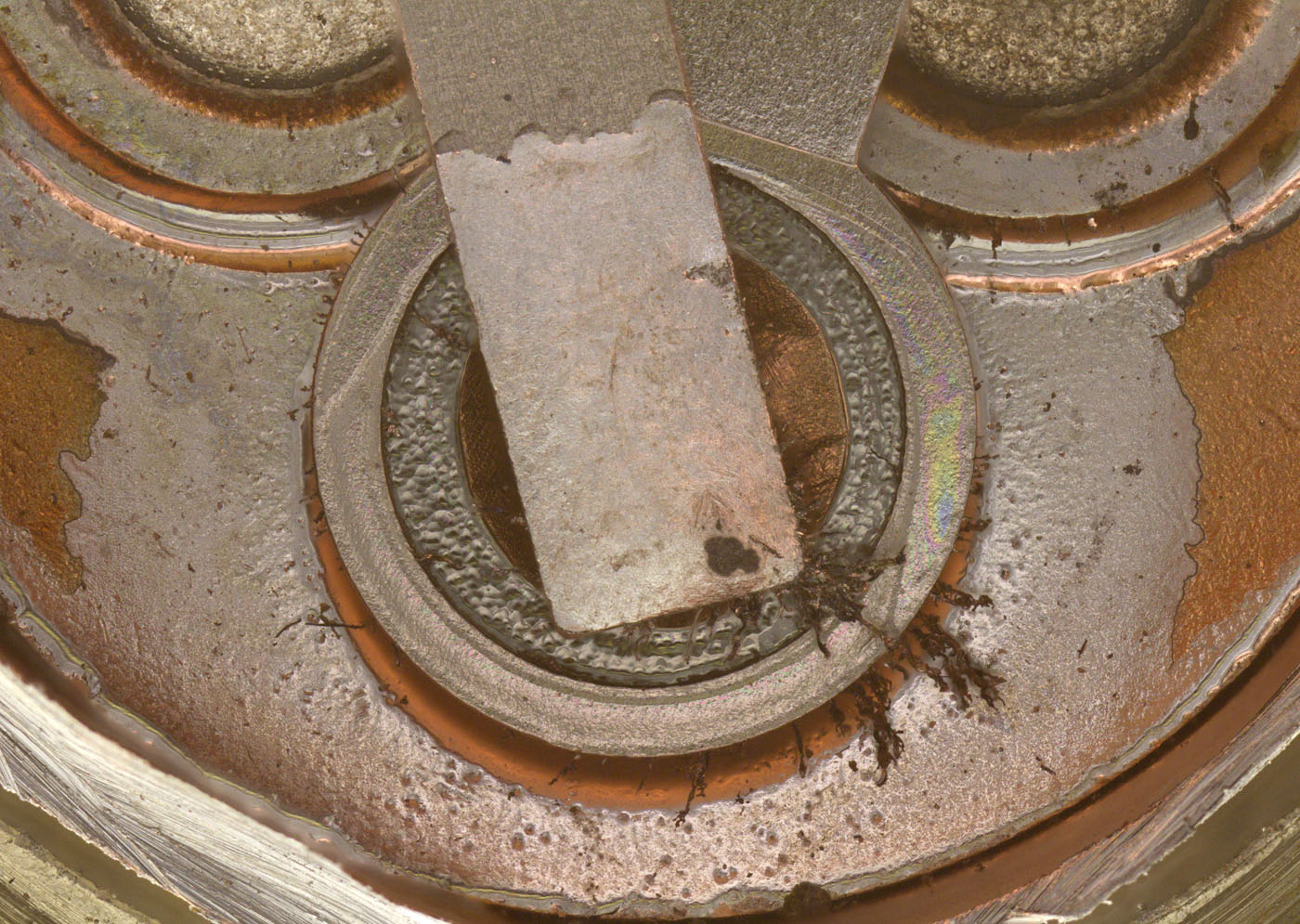
The dendrites are mainly located at the front edge of the element that contacts the emitter and around the base ring. Dendrites have also formed on the pin bushing. Smaller parts have broken off and are lying on the bottom of the housing.
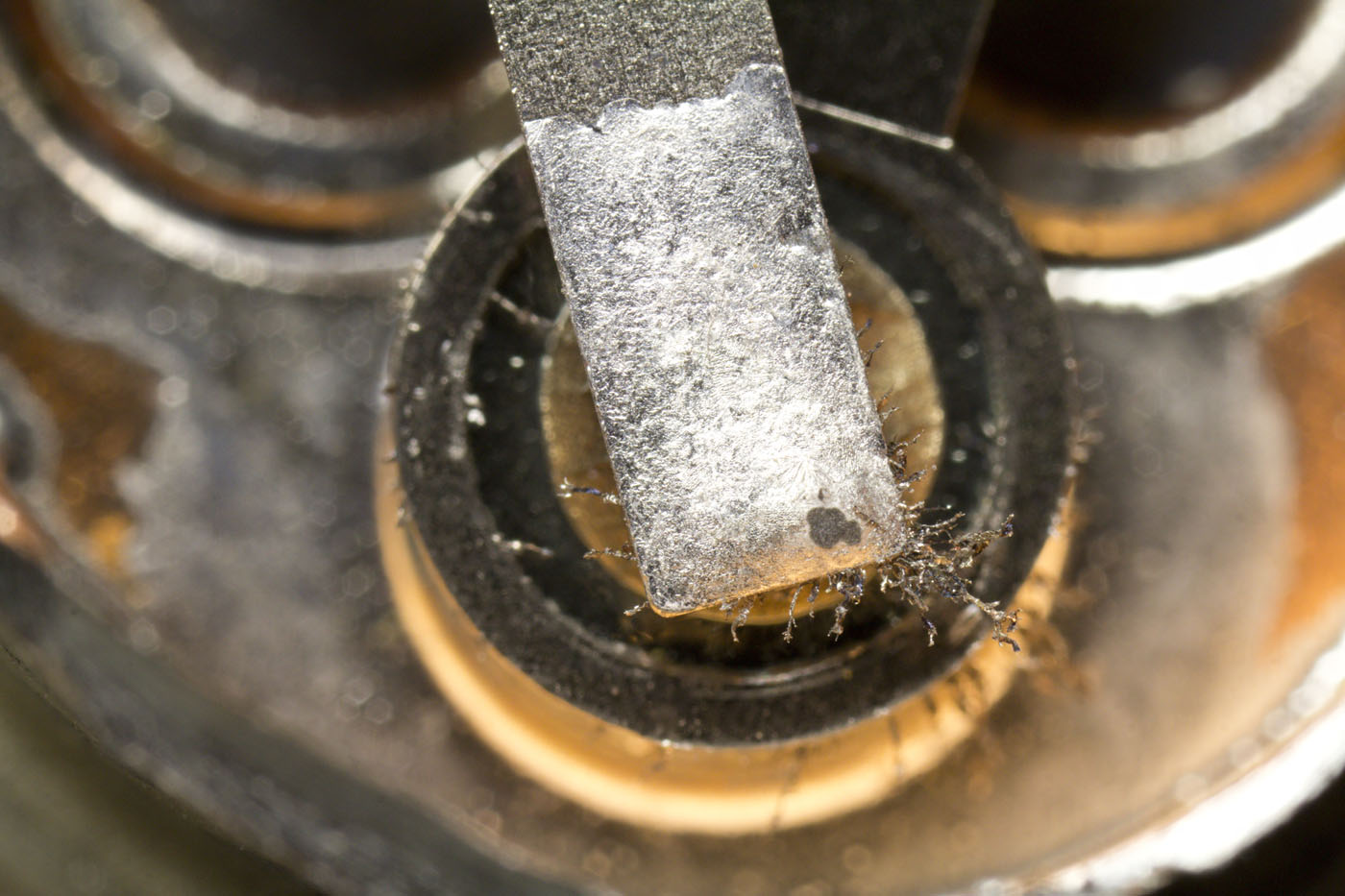
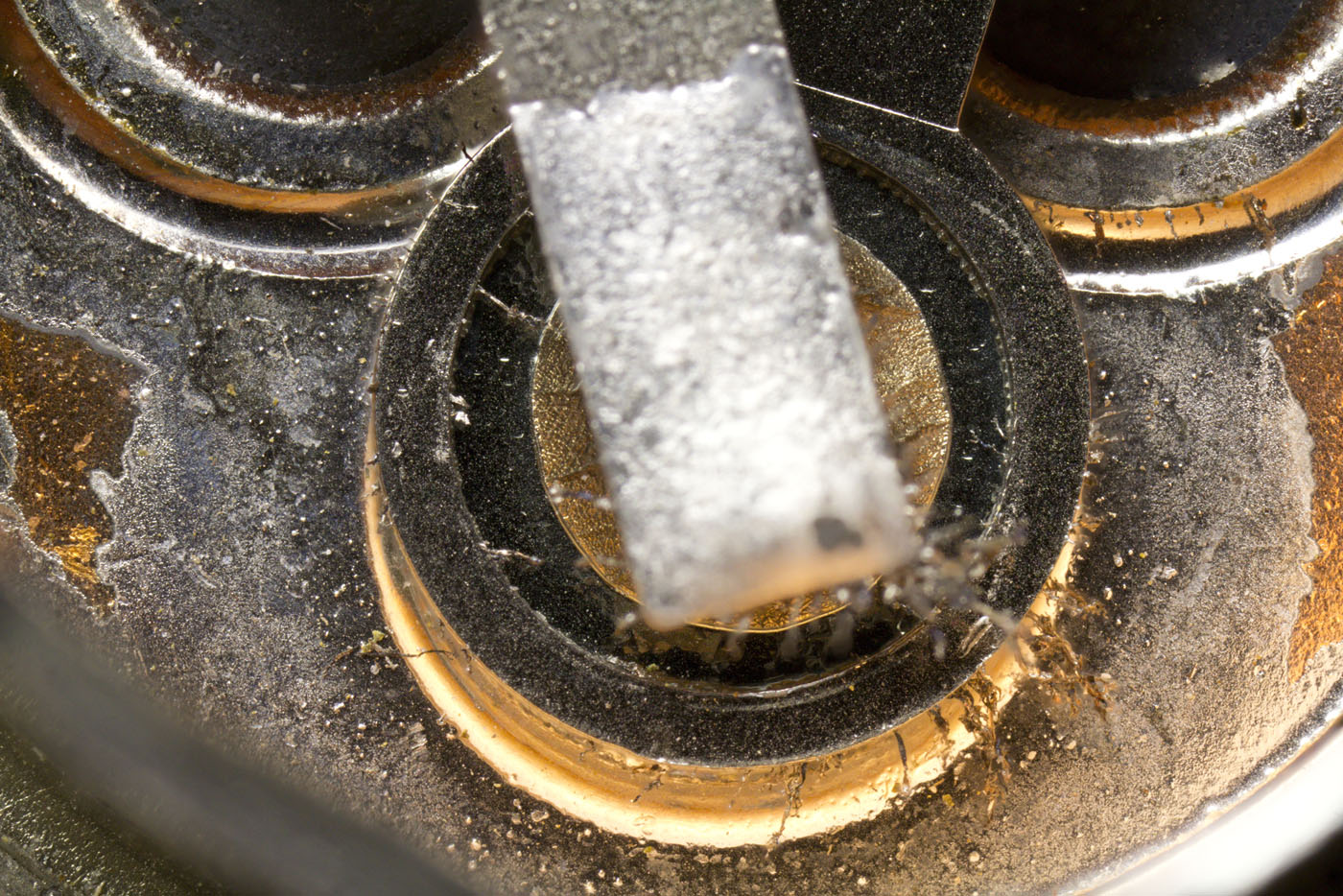
The finely branched dendrites are difficult to image photographically. Especially with several dendrites in different focus planes, focus stacking often does not provide an optimal image. Even with a lot of post-processing, some weaknesses remain. In this case, development into two different focus areas makes it somewhat easier to recognize the dendrites.
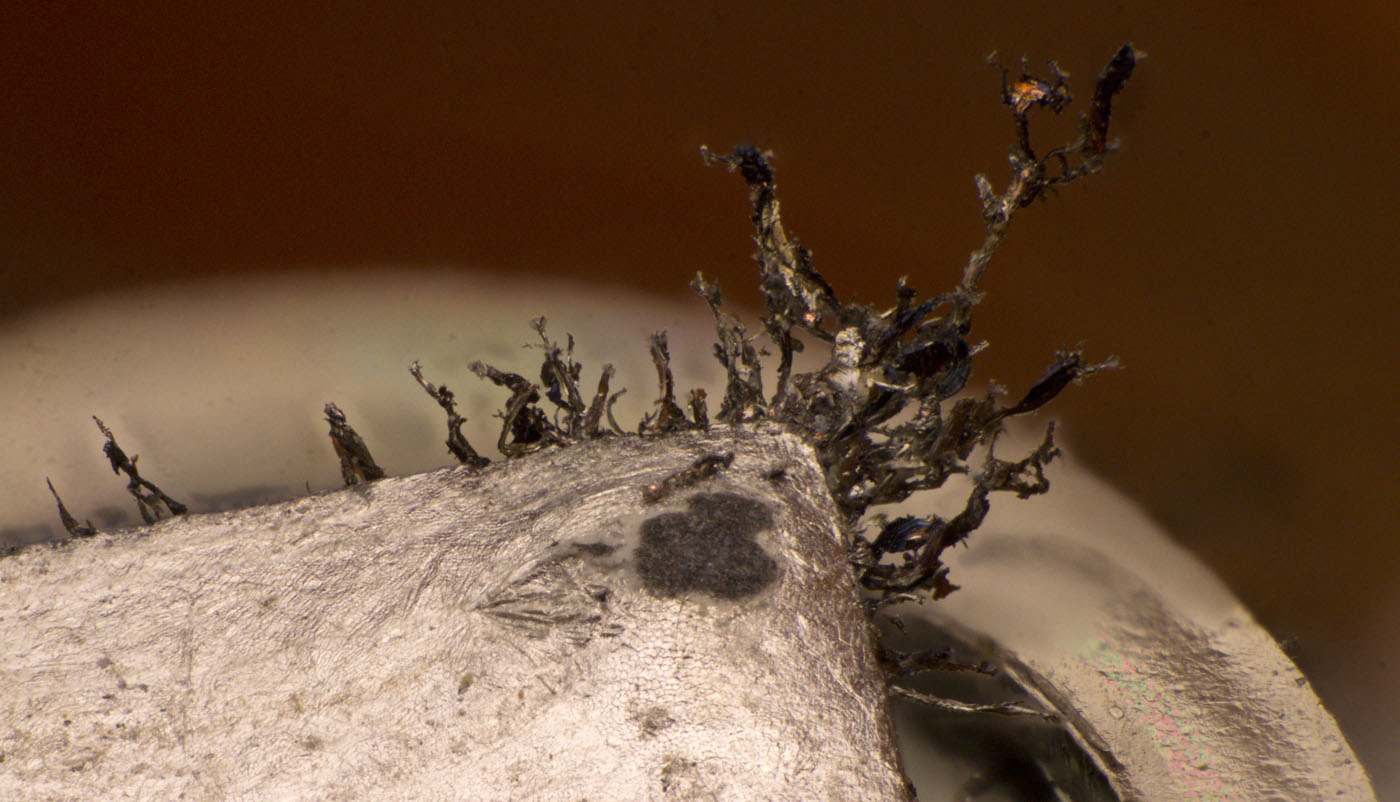
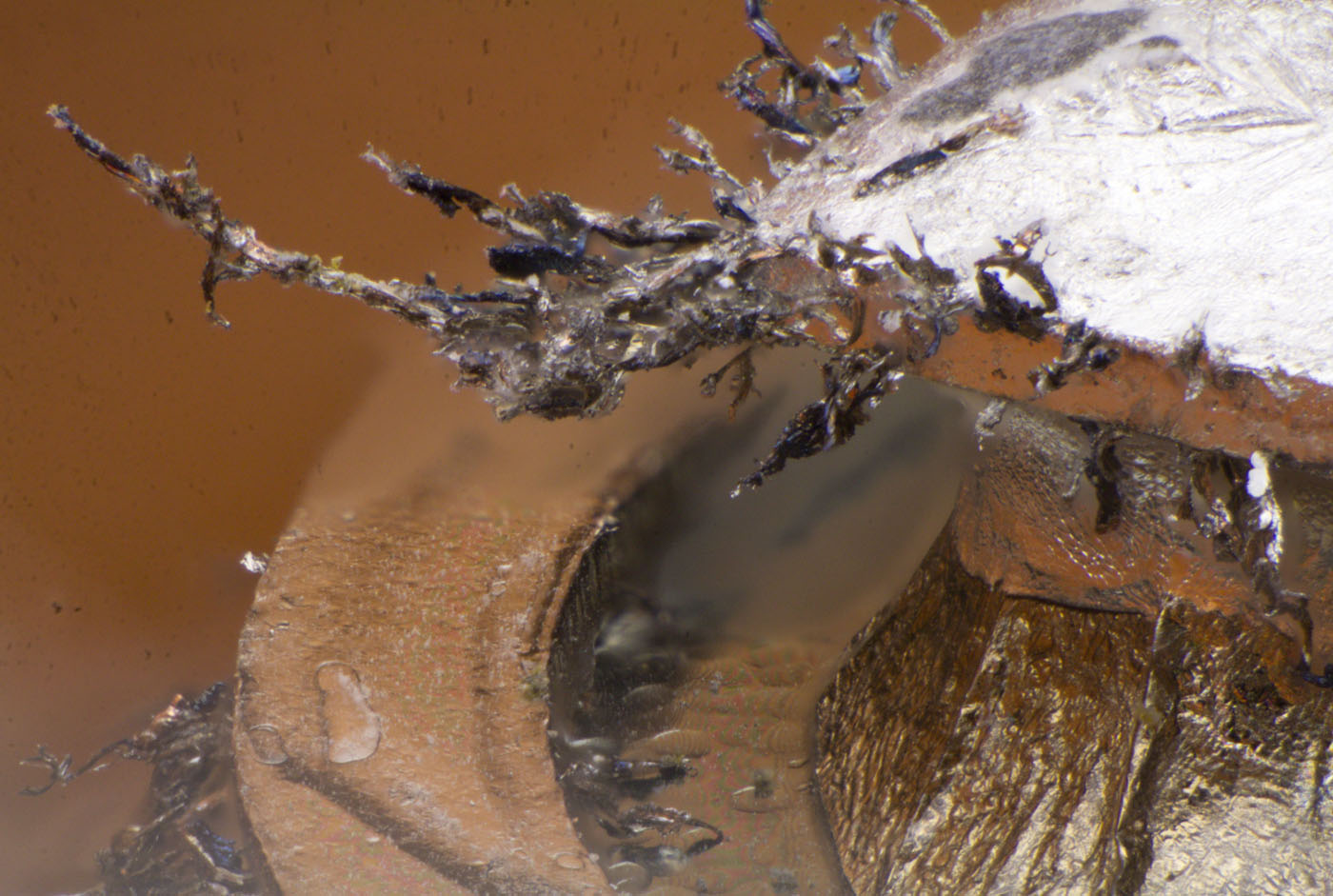
Most of the dendrites of the emitter junction originate from the upper edge and grow horizontally or slightly upwards. However, dendrites have also formed on the lower edge, approaching the base ring.
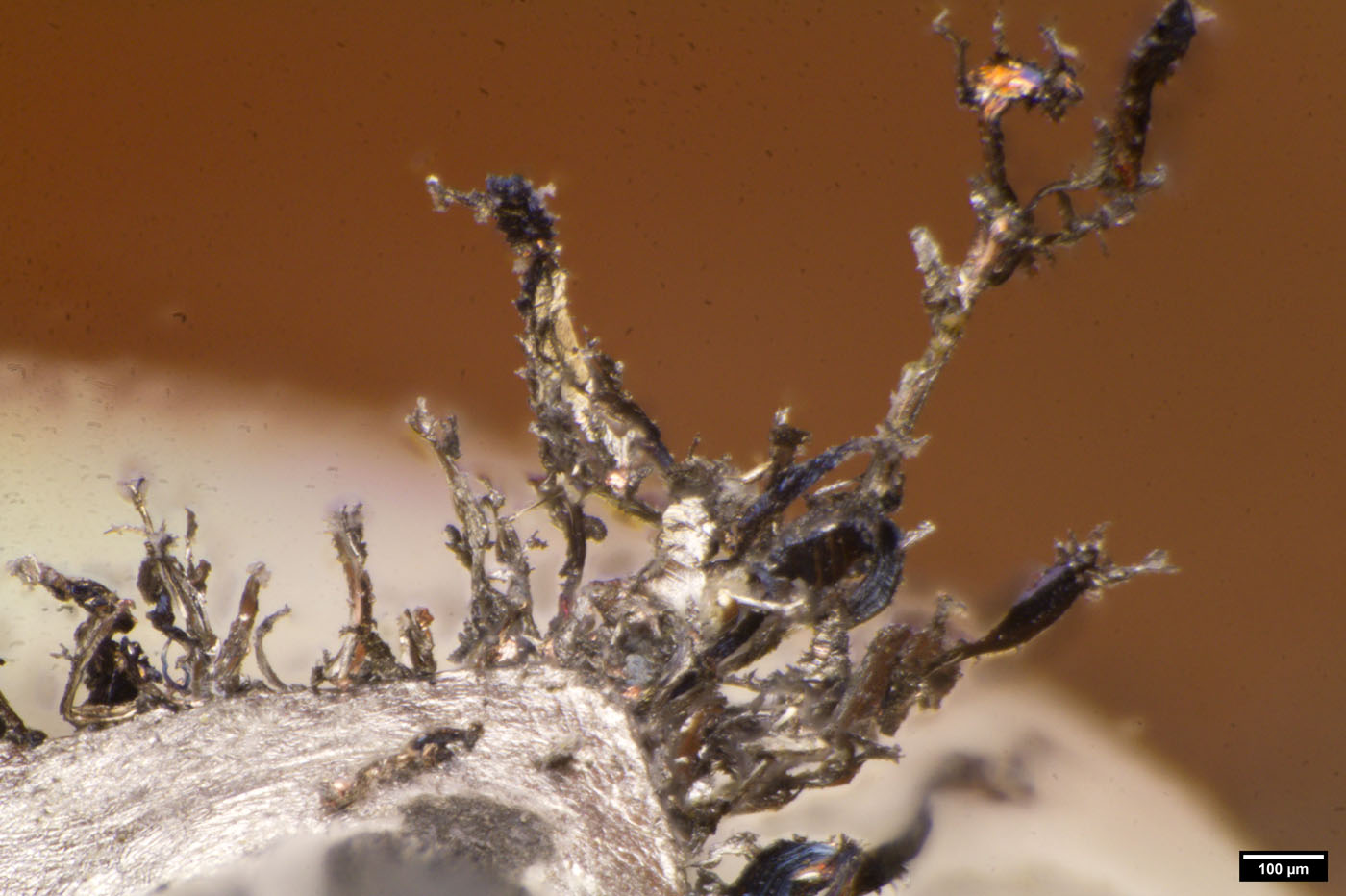
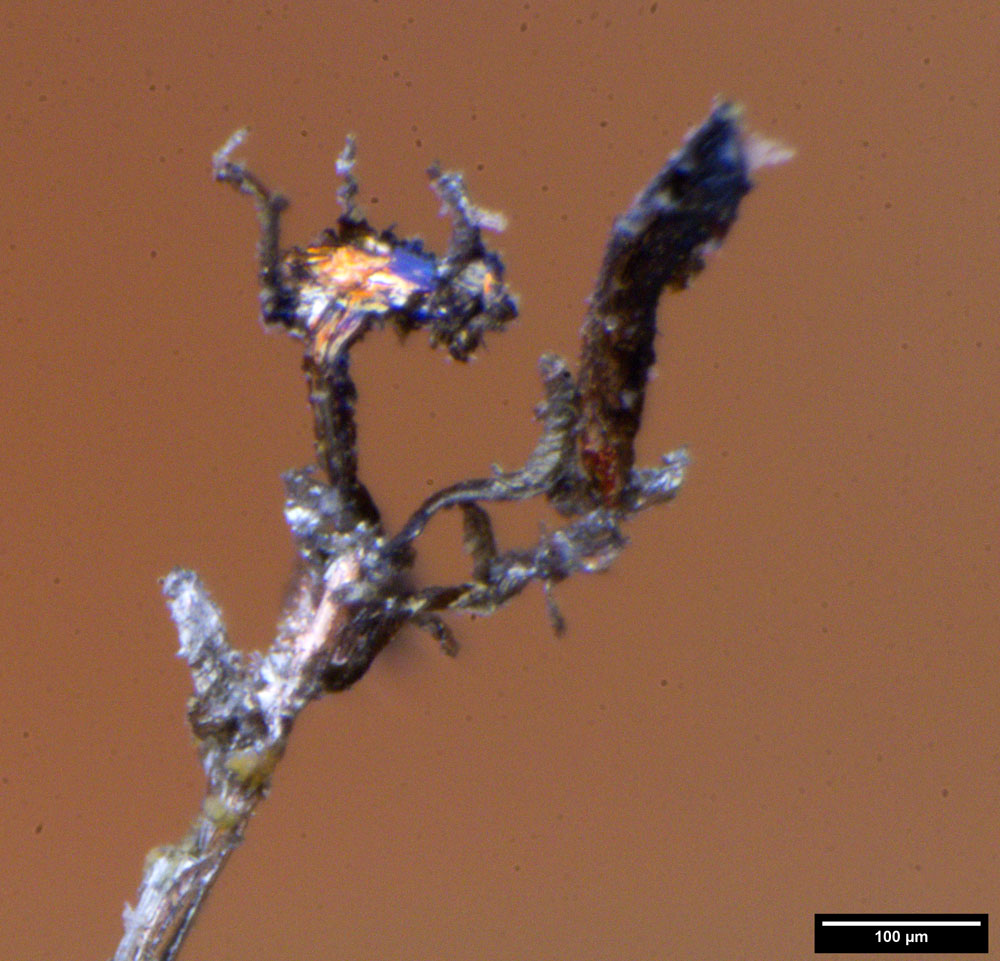
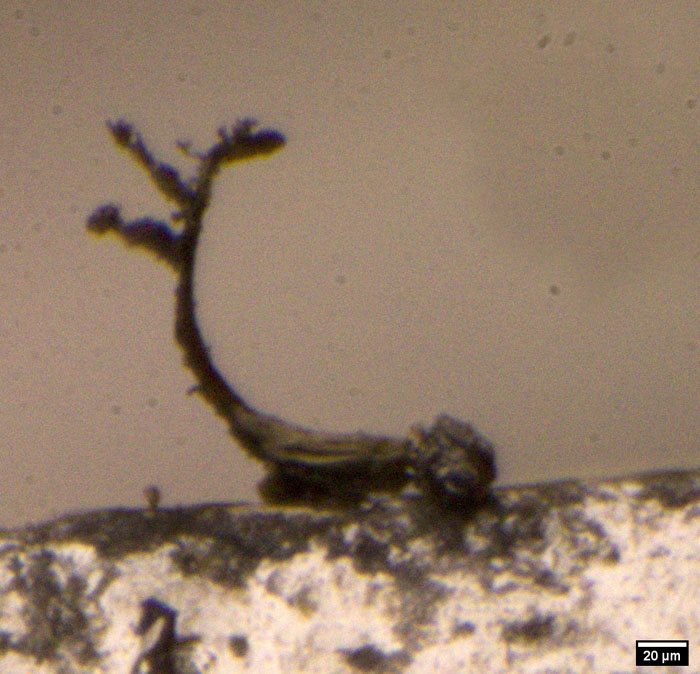
The larger dendrites sometimes form quite massive structures. At the ends, however, they always have very fine branching. It remains unclear which metals are in the dendrites.
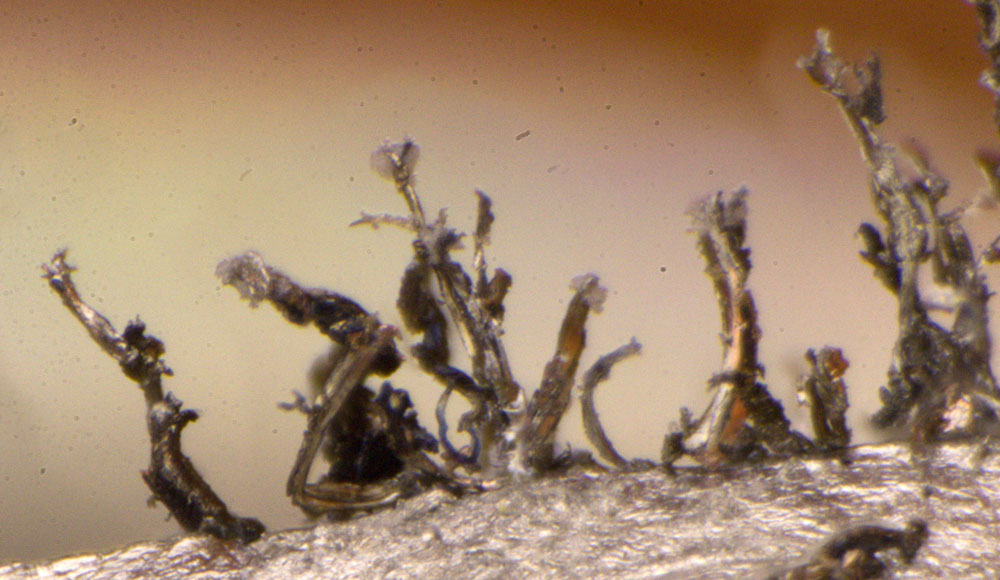
In some cases, the tips of the uppermost dendrites carry remnants of the desiccant.
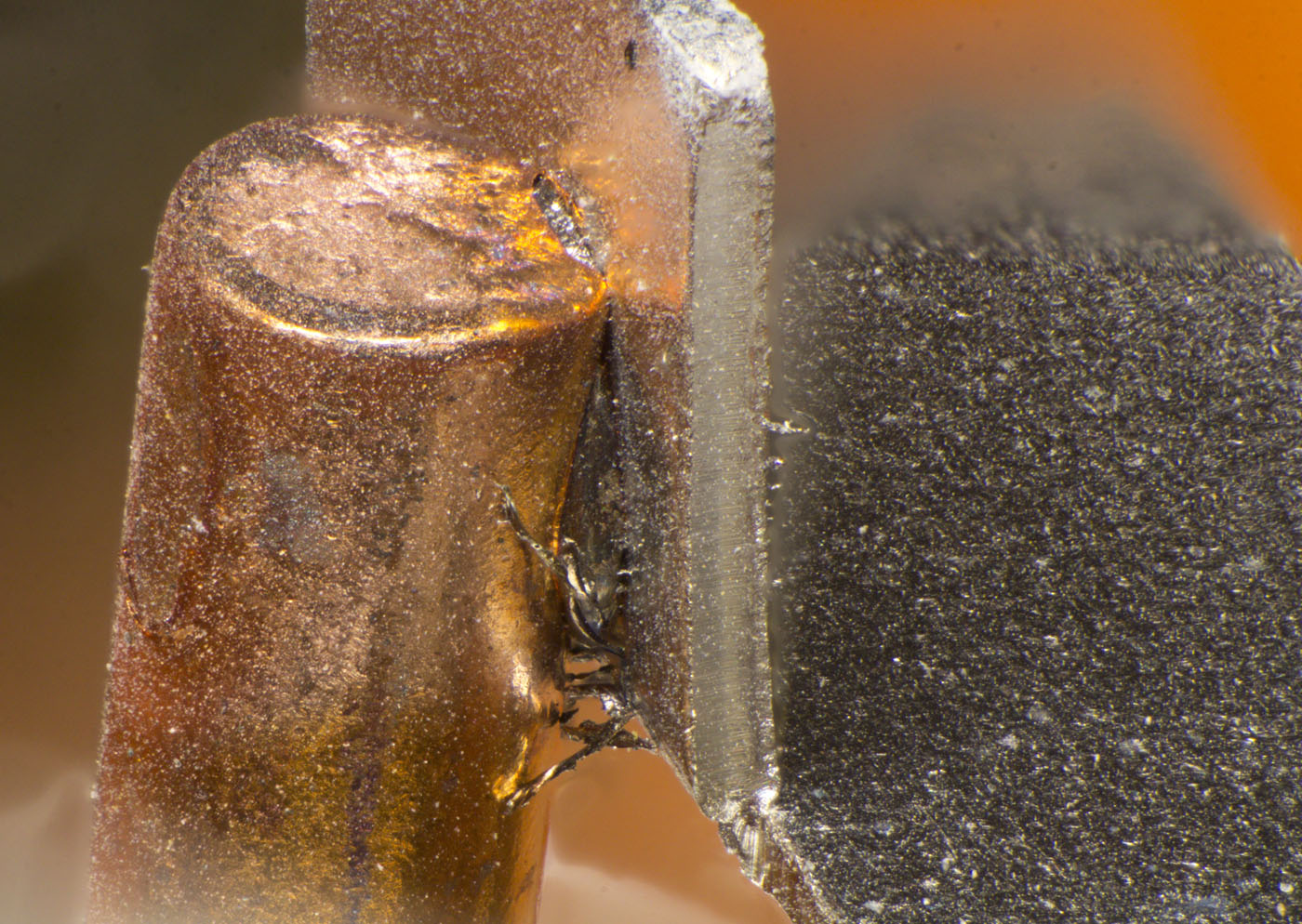
The dendrites are not only formed in areas covered with solder. Such crystals are also found between the pin and the emitter contact plate.
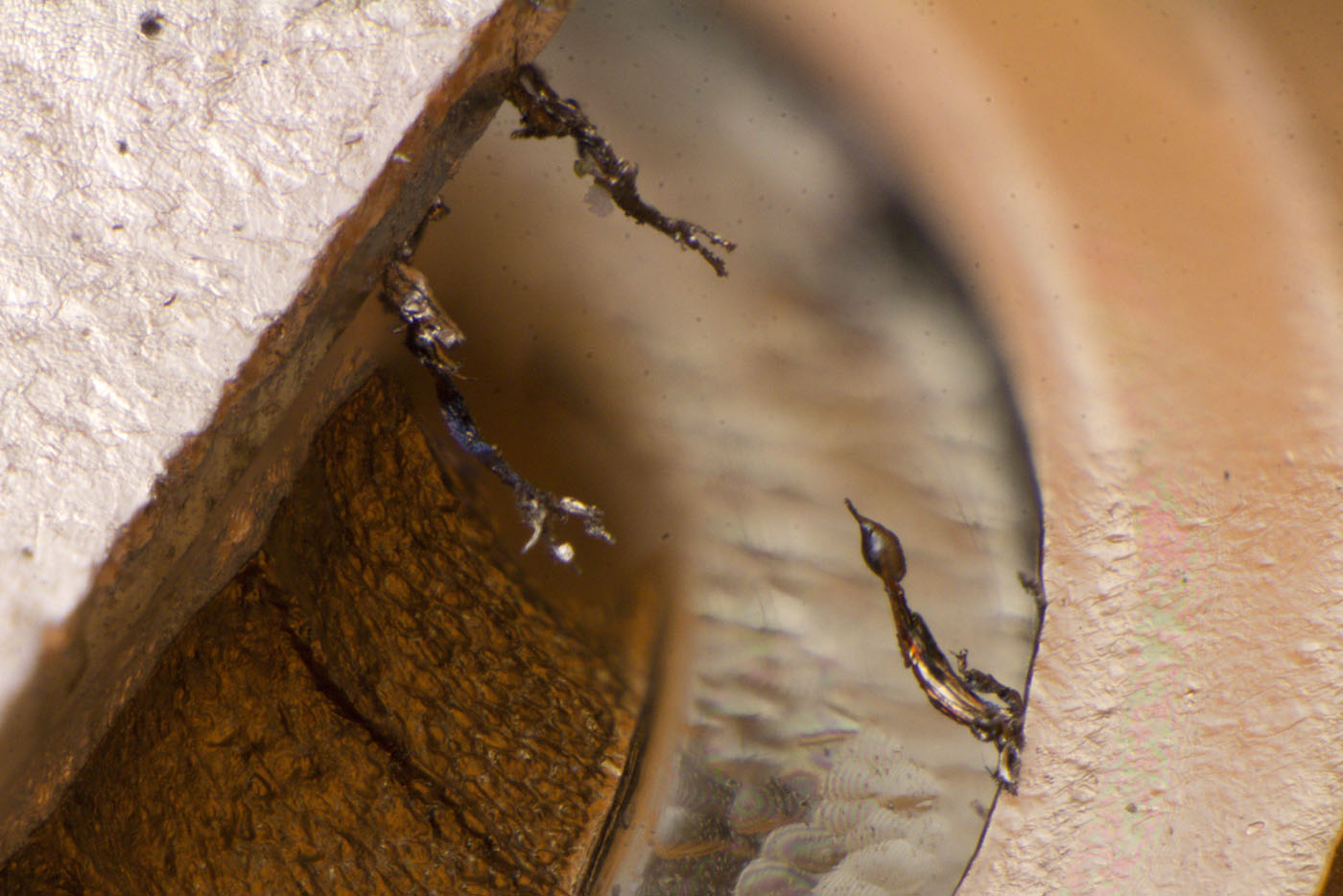
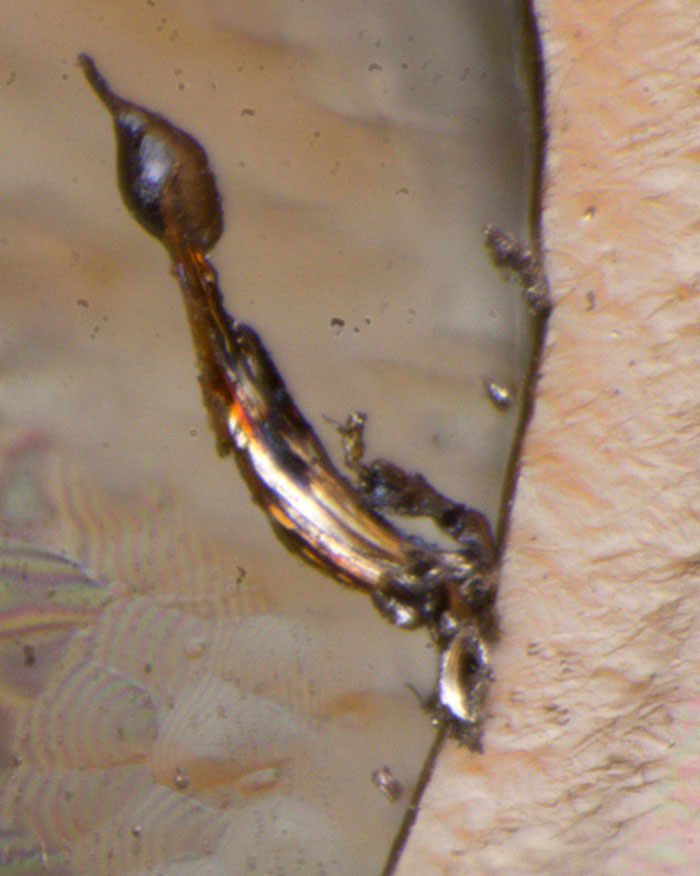
Dendrites have also formed on the base ring. One of those that grew in the direction of the emitter contact has an unusually round structure at the tip. It could be that a short circuit had already formed here, which then melted due to the current flow.
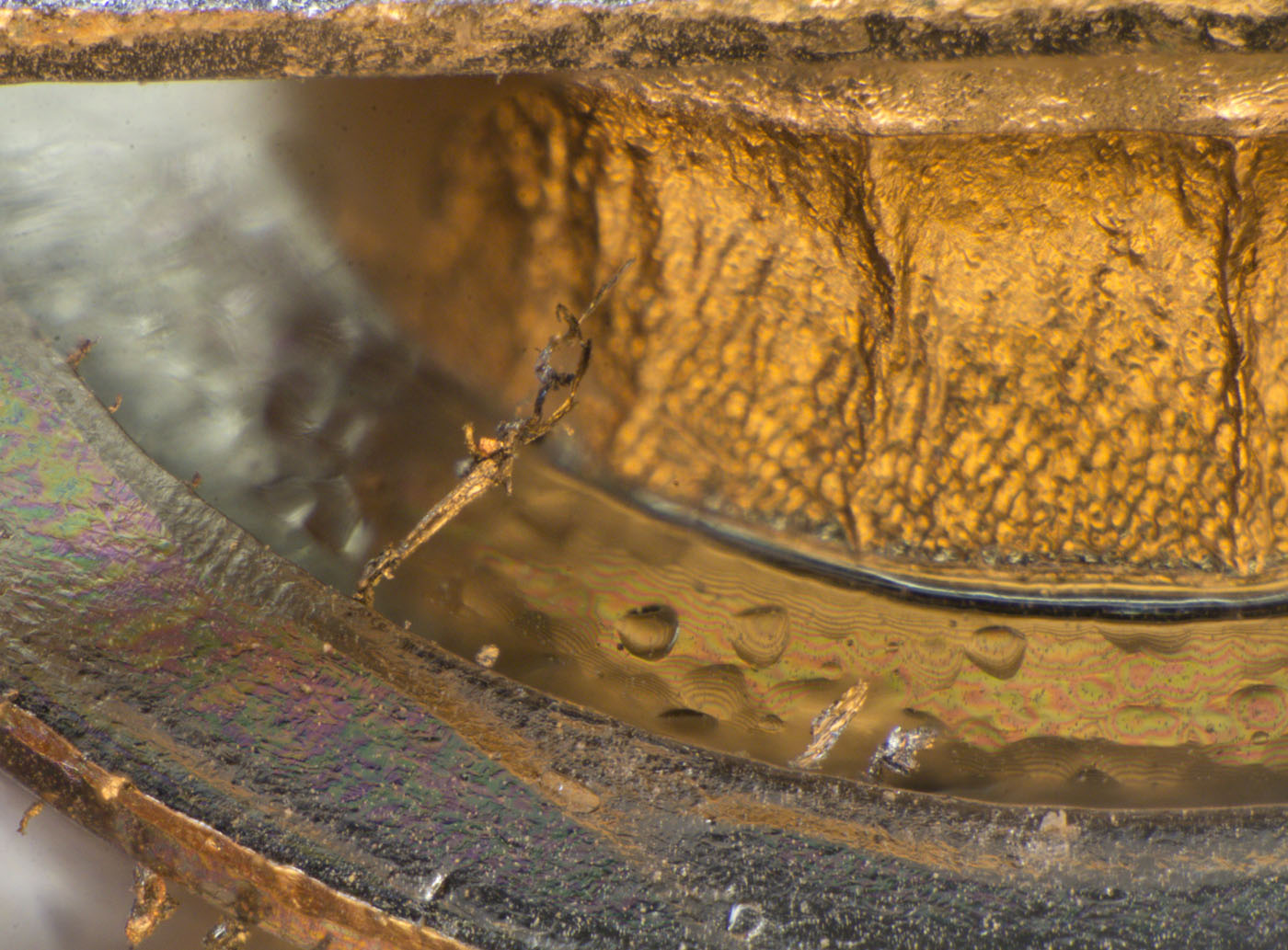
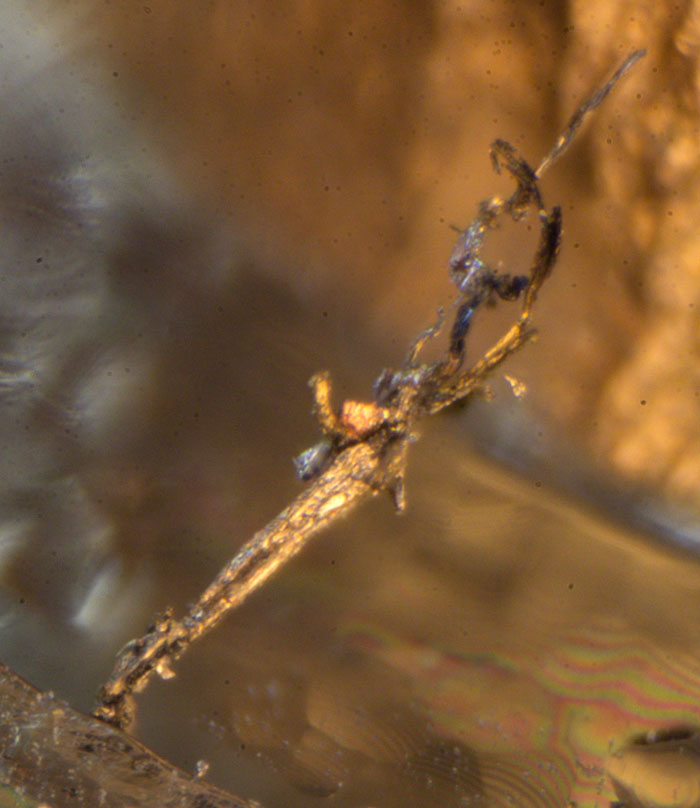
Another dendrite is already very close to the emitter contact.
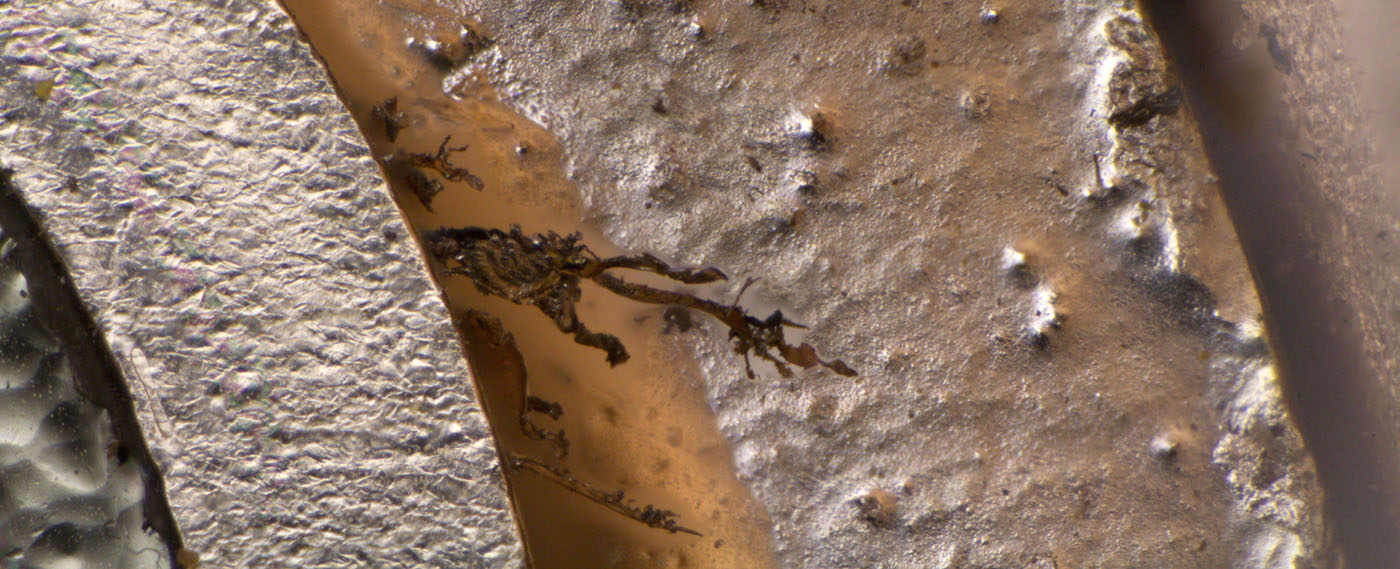
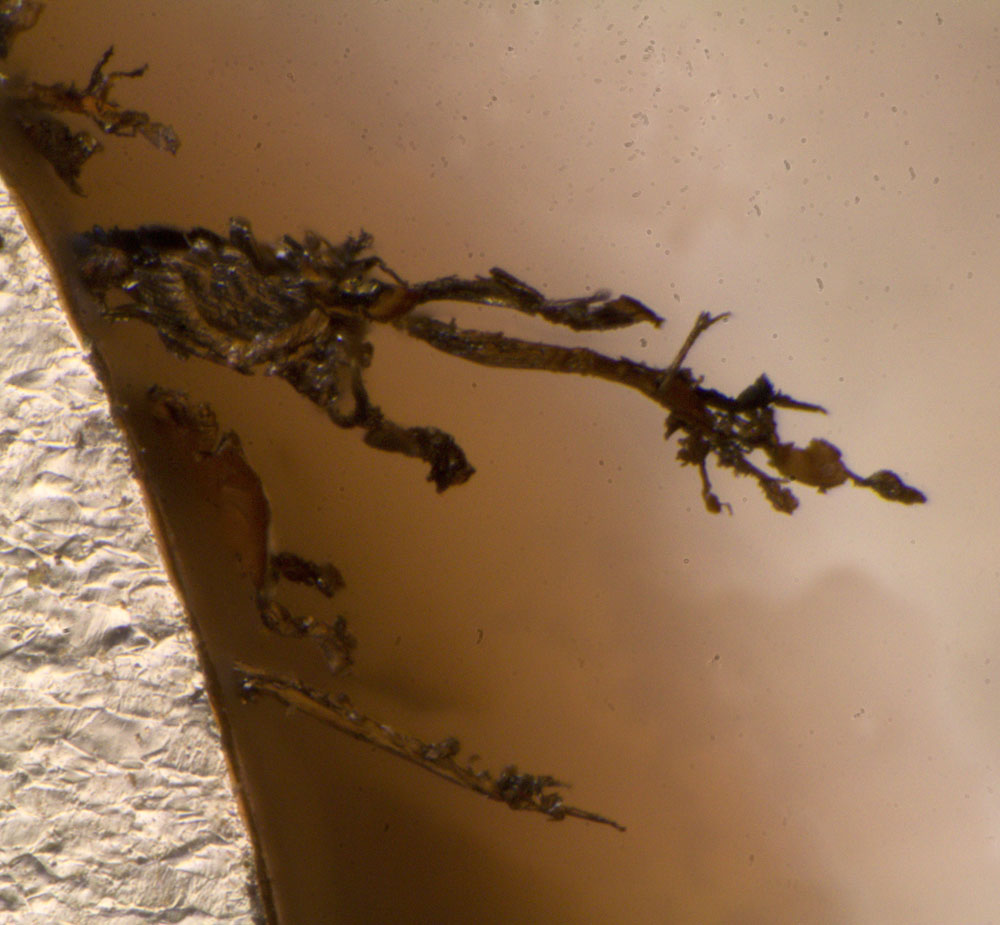
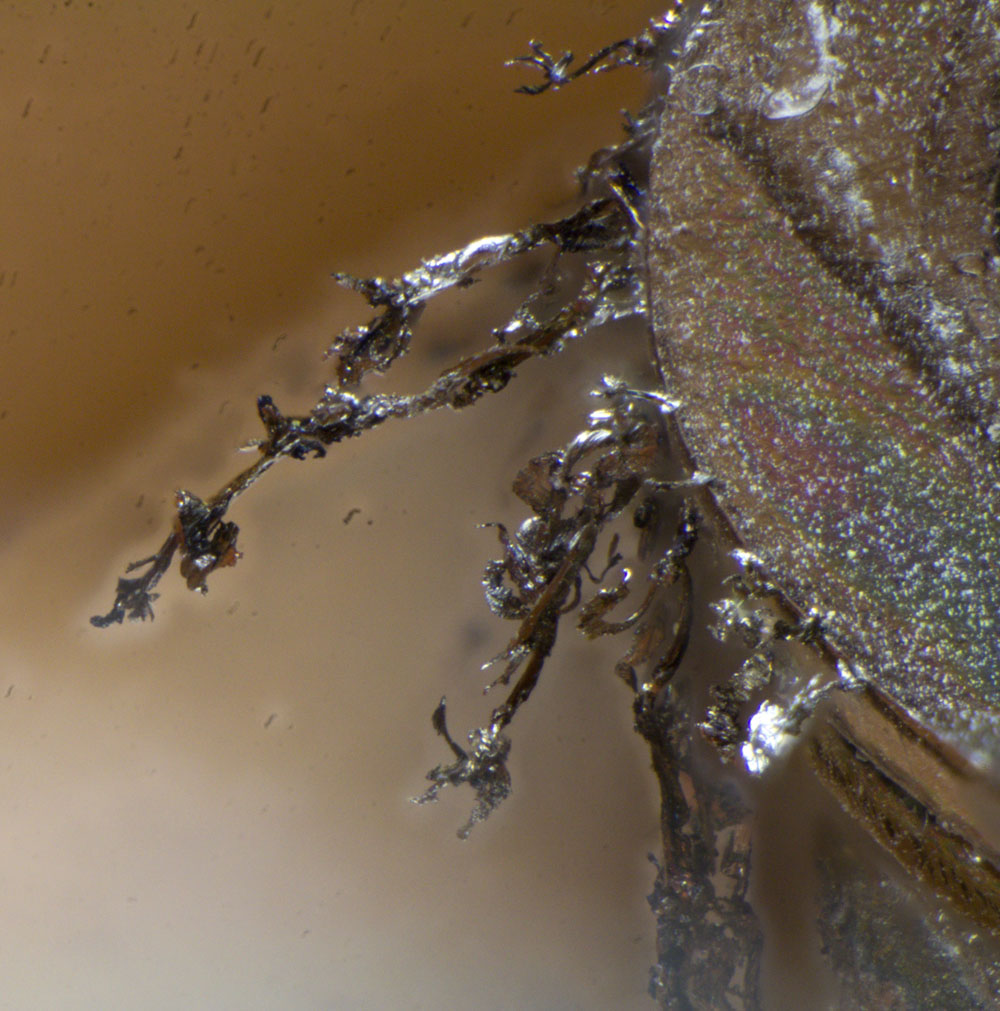
The majority of the dendrites on the base ring are directed toward the base plate of the transistor. Here, however, it may be that the drying tablet has bent the dendrites downward.
https://www.richis-lab.de/BipolarA12.htm 